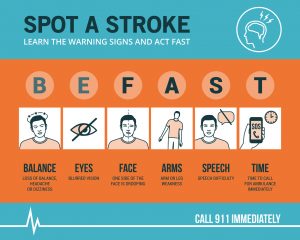 When you have diabetes and are overweight, your doctor may say that a small amount of weight loss could help control your condition. However, if you have to take insulin to control your blood glucose levels, weight loss can be very difficult. Therefore, it is encouraging to report that a new diabetes medicine may help those with diabetes who are obese to lose weight.
When you have diabetes and are overweight, your doctor may say that a small amount of weight loss could help control your condition. However, if you have to take insulin to control your blood glucose levels, weight loss can be very difficult. Therefore, it is encouraging to report that a new diabetes medicine may help those with diabetes who are obese to lose weight.
Insulin and Weight Gain
According to Joslin Diabetes Center, those with diabetes on insulin may have a challenging time losing weight. This is because when people with diabetes first start taking insulin, the body is finally getting the glucose in the cells where it was previously low. In turn, this energy that the cells start taking in lead to weight gain. It is important to note though, that an initial weight gain with the start of insulin treatment is a good sign that the body is working to get your blood glucose levels back in control. However, weight loss is not impossible for those with diabetes on insulin. With the proper supervision and treatment plan by your diabetes health care provider, those with diabetes can lose weight.
Diabetes Medicine and Weight Loss Research
A recent study found that a new diabetes medicine may help those who are obese without diabetes to lose weight. This new diabetes medicine, semaglutide, has a similar chemical structure to the hormone glucagon-like peptide 1 (GLP-1). GLP-1 helps to regulate secretion of insulin as well as appetite. The U.S. Food and Drug Administration (FDA) recently approved the semaglutide injection Ozempic as a once-weekly supplement to diet and exercise to help those with type 2 diabetes control their blood glucose levels.
The one-year study done on semaglutide looked at nearly 1000 participants with obesity and without diabetes. Study results found that this treatment was effective as a weight loss treatment. Different study groups were given different dosages of the treatment (.05-.4 milligrams injection daily). Comparison groups were given a placebo or a different diabetes medicine called liraglutide. All groups were provided monthly diet and exercise counseling.
- All groups that received semaglutide lost significantly more weight than those in the placebo group.
- The highest dose group (.4 milligram injection daily) lost the most weight, nearly 5 times more than the placebo group.
- Researchers suggest that more studies could help fully explore the weight loss potential of semaglutide.
Other Ways to Lose Weight With Diabetes
Outside of prescription medicines, there are several lifestyle factors that can be adjusted to help those with diabetes lose weight.
- Eat a healthier diet. According to the Centers for Disease Control (CDC), those with diabetes should work with their doctor and a dietitian. They can help you learn how to create a healthy, balanced meal plan. A diabetes-friendly meal plan should focus on healthy carbohydrates such as fruits, vegetables, fiber-rich whole grain foods, and low-fat dairy. Learning appropriate portion sizes and limiting eating out are other strategies to help you lose weight.
- Exercise more. When you exercise, insulin becomes more sensitive. In other words, exercise helps your muscle cells to better use the available insulin. In turn, the insulin works to better take up glucose into the cells and use it as energy during and after activity. This helps lower your blood glucose levels. However, it is important to note that those taking insulin to help control their blood glucose levels should adjust their insulin dosage and carbohydrate intake around the time they exercise to avoid a glucose low, or hypoglycemia. Check out the American Diabetes Association site or talk to your healthcare provider about ways to avoid hypoglycemia during and after exercise.
- Drink plenty of water each day to help prevent drinking your calories from sugary drinks. Most of your body is made up of water. Therefore, drinking plenty of water each day can help you maintain optimal health. In addition, people with diabetes need more water when blood glucose levels are high. Studies show that increased water intake can help those with diabetes better control blood glucose levels. The average adult should drink about half of your body weight in ounces of water each day. For example, if you weigh 200 pounds, then you should drink 100 ounces of fluid each day, or about 12.5 cups of water. Increased water intake can also help you feel fuller longer and prevent dehydration. In turn, increased water intake can help you manage you weight and increase energy over time.
- Take diabetes-friendly supplements such as Glucarex by Vita Sciences. Glucarex contains compounds such as chromium, alpha lipoic aicd and cinnamon to help support blood glucose levels. Such ingredients can help support weight loss and a healthy metabolism.
-written by Staci Gulbin, MS, MEd, RD, LDN
Sources:
American Diabetes Association (last edited September 25, 2017) “Blood Glucose and Exercise.”
Centers for Disease Control and Prevention (December 18, 2017) “Eat Well!”
Diabetes.co.uk (accessed March 19, 2018) “Water and Diabetes.”
Joslin Diabetes Center (accessed March 19, 2018) “Insulin and Weight Gain.”
Science Daily (March 18, 2018) “New diabetes drug may help people with obesity lose weight.”
 Every new year, many of us make resolutions to be healthier. Whether it be weight loss, exercising more, eating healthier, or managing stress better, such resolutions usually start off strong. However, by early spring, such goals usually lose steam and get pushed off until the next new year. That is why it is important to plan ahead before making any goals so you can make sure they are realistic and backed up with a lasting motivating factor. With such planning, you can make your new year’s goals come true this year and maintain such healthy habits for the long-term.
Every new year, many of us make resolutions to be healthier. Whether it be weight loss, exercising more, eating healthier, or managing stress better, such resolutions usually start off strong. However, by early spring, such goals usually lose steam and get pushed off until the next new year. That is why it is important to plan ahead before making any goals so you can make sure they are realistic and backed up with a lasting motivating factor. With such planning, you can make your new year’s goals come true this year and maintain such healthy habits for the long-term. reflux occurs for twice a week for more than a few weeks. Uncontrolled GERD can lead to respiratory problems or conditions such as esophagitis, which is an inflammation of the esophagus.
reflux occurs for twice a week for more than a few weeks. Uncontrolled GERD can lead to respiratory problems or conditions such as esophagitis, which is an inflammation of the esophagus.